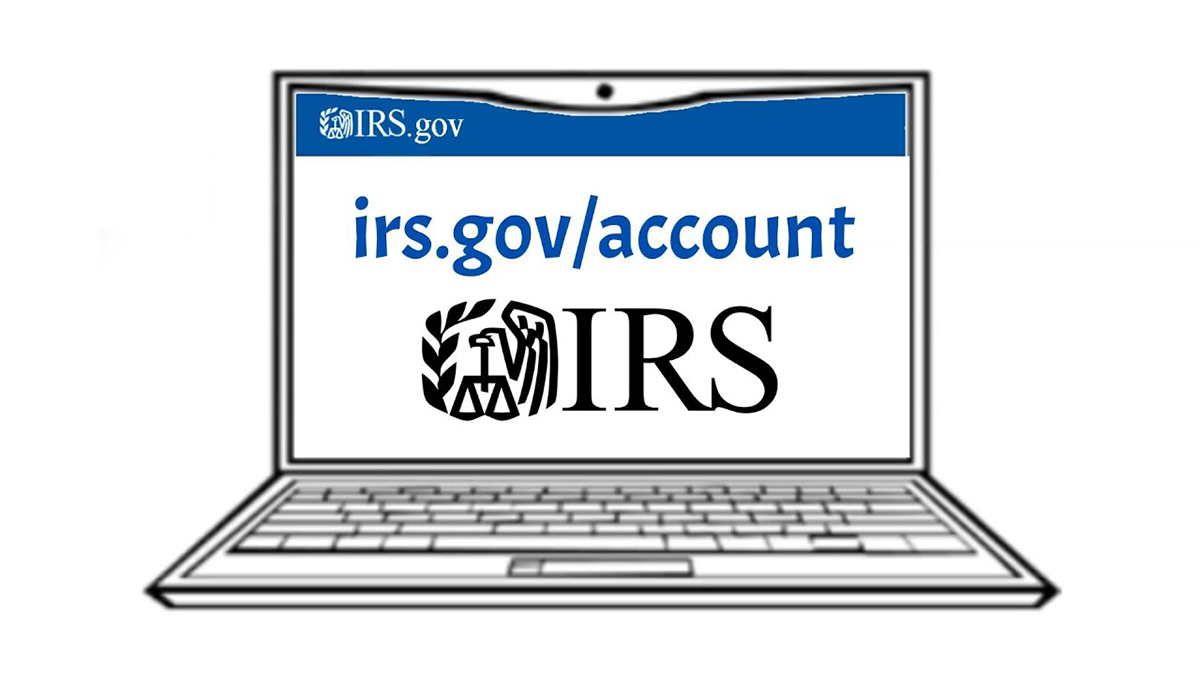

Finance
How Do I Check My Childs Credit
Modified: March 3, 2024
Learn how to check your child's credit and protect their financial future. Get expert advice on finance and ensure their credit is secure.
(Many of the links in this article redirect to a specific reviewed product. Your purchase of these products through affiliate links helps to generate commission for LiveWell, at no extra cost. Learn more)
Table of Contents
- Introduction
- Why Check Your Child’s Credit?
- How to Check Your Child’s Credit
- Gather Necessary Information
- Contact the Credit Bureaus
- Verify Your Identity and Relationship to the Child
- Request a Credit Report
- Review the Credit Report
- Dispute Any Inaccuracies
- Set Up Credit Monitoring
- Teach Responsible Credit Habits
- Conclusion
Introduction
As a parent or guardian, you want to protect and ensure the financial well-being of your child. While credit monitoring may not be at the top of your mind when it comes to your child’s financial future, it is an important aspect to consider. In today’s digital age, where identity theft and fraud are prevalent, checking your child’s credit can provide you with peace of mind and protect them from potential harm.
It’s not uncommon for children to become victims of identity theft, with criminals using their clean credit history to obtain loans, credit cards, or even mortgages. Unfortunately, many parents only discover this when their child reaches adulthood and applies for their first credit card or attempts to secure a loan.
By regularly monitoring your child’s credit, you can identify any unauthorized activity early on and take the necessary steps to rectify the situation. In this article, we will guide you through the process of checking your child’s credit and provide you with tips to ensure their financial security.
Why Check Your Child’s Credit?
Checking your child’s credit may seem like an unconventional step, but it is a proactive measure that can safeguard their financial future. Here are a few reasons why you should consider checking your child’s credit:
- Identity Theft: Children are particularly vulnerable to identity theft because their clean credit histories make them attractive targets for fraudsters. By monitoring their credit, you can identify any suspicious activity and prevent potential financial damage.
- Early Detection: By checking your child’s credit from an early age, you can detect any unauthorized accounts or inquiries before they impact their credit score. This early detection allows you to take immediate action and protect their financial health.
- Education Opportunities: Monitoring your child’s credit can provide valuable educational experiences. It allows you to teach them about responsible financial habits, such as the importance of paying bills on time, budgeting, and maintaining a good credit score. By involving them in the process, you are empowering them to become financially responsible adults.
- Building Credit: Monitoring your child’s credit can also help in building their credit history. By keeping an eye on their credit report, you can ensure that their accounts are accurately reported, which can positively impact their credit score as they enter adulthood.
- Prevent Future Issues: By addressing any inaccuracies or discrepancies in your child’s credit report early on, you can prevent future challenges when they apply for loans, credit cards, or even jobs that require a credit check. It allows you to rectify any issues before they become major obstacles.
Remember, while it may seem unlikely that your child would have a credit report, it is better to be safe than sorry. By regularly checking their credit, you are taking a proactive step to protect their financial future and empower them with the skills and knowledge to navigate the modern financial landscape.
How to Check Your Child’s Credit
Checking your child’s credit may seem like a daunting task, but it is relatively straightforward when you know the steps involved. Here is a step-by-step guide on how to check your child’s credit:
- Gather Necessary Information: Collect all the necessary information about your child, including their full name, date of birth, and Social Security number. This information will be required when contacting the credit bureaus.
- Contact the Credit Bureaus: Reach out to the three major credit bureaus – Equifax, Experian, and TransUnion. You can contact them by phone or through their official websites to request your child’s credit report.
- Verify Your Identity and Relationship to the Child: While contacting the credit bureaus, you will need to provide proof of your identity as well as documentation that establishes your legal relationship to the child, such as a birth certificate or adoption papers.
- Request a Credit Report: Once your identity and relationship have been verified, request a credit report for your child. Each credit bureau may have slightly different procedures, so ensure you follow their specific instructions.
- Review the Credit Report: Carefully review the credit report for any signs of suspicious activity or inaccuracies. Check for any unauthorized accounts, incorrect personal information, or unfamiliar inquiries.
- Dispute Any Inaccuracies: If you find any inaccuracies or fraudulent activity on your child’s credit report, promptly dispute them with the credit bureaus. Provide them with as much documentation and evidence as possible to support your claim.
- Set Up Credit Monitoring: Consider enrolling your child in a credit monitoring service. These services can help you stay informed about any changes or potential issues with their credit report and provide an extra layer of security.
- Teach Responsible Credit Habits: Take this opportunity to educate your child about responsible credit habits. Teach them about the importance of managing credit responsibly, making payments on time, and the potential consequences of poor financial decisions.
By following these steps, you can effectively check your child’s credit and ensure their financial well-being. Remember to regularly review their credit report to stay vigilant and address any concerns as early as possible.
Gather Necessary Information
Before you can begin the process of checking your child’s credit, it’s important to gather all the necessary information. This information will be required when contacting the credit bureaus and requesting your child’s credit report. Here are the key pieces of information you will need:
- Full Name: Collect your child’s full legal name. Make sure to include any middle names or initials.
- Date of Birth: Note down your child’s date of birth. This information is essential for verifying their identity.
- Social Security Number: Obtain your child’s Social Security number. This unique nine-digit number is crucial for accessing their credit information.
- Identification Documents: Gather any necessary identification documents to establish your relationship to the child. This may include a birth certificate, adoption papers, or legal guardianship documents.
- Proof of Address: Some credit bureaus may require proof of your address to confirm your identity. Have a utility bill, lease agreement, or other official documents ready as proof of your current residence.
Ensure that you have the accurate and up-to-date information for your child to avoid any delays or complications during the credit checking process. Double-check and verify the information to minimize the risk of errors.
Remember to keep this information stored securely and confidentially, as it contains sensitive personal details. Safeguarding your child’s personal information is crucial to protect them from potential identity theft or fraud.
Once you have gathered all the necessary information, you can proceed to contact the credit bureaus and start the process of checking your child’s credit. Be prepared to provide this information to the credit bureaus to verify your identity and establish your relationship to the child.
Contact the Credit Bureaus
Once you have gathered all the necessary information, the next step in checking your child’s credit is to contact the three major credit bureaus: Equifax, Experian, and TransUnion. These credit reporting agencies hold the credit information of individuals, including minors.
There are several ways to reach out to the credit bureaus:
- Phone: You can contact the credit bureaus by phone. Look up their contact numbers on their official websites and make a call to speak with a representative. Be prepared to provide the necessary information about your child, as well as your own identification details.
- Online: Most credit bureaus offer online platforms for requesting credit reports. Visit their websites and follow their instructions for requesting a credit report for a minor. The online process typically involves entering the necessary information and uploading scanned copies of identification documents.
- Mail: Another option is to request your child’s credit report by mail. Write a letter to each of the credit bureaus, providing all the required information about your child and yourself, along with copies of identification documents. Be sure to keep a copy of the letter and send it via certified mail to track its delivery.
When contacting the credit bureaus, it’s important to clearly state that you are requesting the credit report for a minor child. The credit bureaus may have specific procedures and requirements for verifying your identity and relationship to the child.
Remember to be patient and persistent. It may take some time to reach the appropriate department and complete the necessary steps. Keep a record of all communications, including dates, times, and the names of the representatives you speak to. This documentation will be useful if you encounter any issues or discrepancies later on.
By contacting the credit bureaus, you are taking the vital step of accessing your child’s credit information and ensuring their financial security. Once you have established contact with the credit bureaus, you can proceed with verifying your identity and relationship to the child, and ultimately request their credit report.
Verify Your Identity and Relationship to the Child
Once you have contacted the credit bureaus to request your child’s credit report, the next step is to verify your identity and establish your relationship to the child. The credit bureaus have stringent procedures in place to ensure the security and privacy of personal credit information.
Here’s what you need to do to verify your identity and relationship to the child:
- Provide Personal Identification: You will need to provide identification documents to verify your own identity. This may include your driver’s license, passport, Social Security card, or other government-issued identification. These documents serve as proof that you are the authorized individual requesting the credit report.
- Establish Relationship: You must establish your legal relationship to the child. This involves providing documentation that proves you are the parent, legal guardian, or authorized representative of the child. For example, you may need to submit a birth certificate, court order of guardianship, or adoption papers.
- Additional Documentation: In some cases, the credit bureaus may require additional documentation to verify your relationship to the child. This may include documents such as a marriage certificate, divorce decree, or death certificate if applicable. Follow the specific instructions provided by each credit bureau to ensure that you submit all the required documents.
It’s important to carefully review the requirements and guidelines provided by the credit bureaus to ensure that you submit the correct documentation. Failure to provide sufficient evidence could lead to delays or complications in obtaining your child’s credit report.
When submitting identification and relationship documents, it’s crucial to protect sensitive information. Only share copies of the required documents and avoid sending originals whenever possible. Additionally, ensure that you securely store and dispose of any personal information to prevent identity theft.
Remember, the credit bureaus have strict protocols in place to protect personal information. By verifying your identity and establishing your relationship to the child, you can ensure that you have the necessary authorization to access your child’s credit information and proceed with obtaining their credit report.
Request a Credit Report
Once you have verified your identity and relationship to the child, the next step in checking your child’s credit is to request their credit report from the credit bureaus. Each credit bureau has its own process for requesting a credit report for a minor, so it’s essential to follow their specific instructions.
Here’s how you can request a credit report for your child:
- Equifax: Visit the Equifax website and navigate to the section for requesting a credit report for a minor. Follow the instructions provided, enter the necessary information, and upload any required identification documents. Alternatively, you can contact Equifax directly via phone to request the credit report.
- Experian: Visit the Experian website and go to the area dedicated to requesting a credit report for a minor. Follow the guidance provided, enter the required details, and upload any necessary identification documents. You can also call Experian to request the credit report over the phone.
- TransUnion: Access the TransUnion website and locate the section related to requesting a credit report for a minor. Review the instructions, input the requested information, and upload the required identification documents. If preferred, you can also call TransUnion to initiate the credit report request.
During the process of requesting the credit report, ensure that you provide all the requested details accurately. Double-check the information before submitting to avoid any delays or potential inaccuracies in the credit report.
It’s important to note that due to the minor status of your child, their credit report may initially show as “N/A” or “No File Found.” This is normal, as children typically do not have an established credit history. However, by requesting the credit report, you are creating a record and allowing for future monitoring of any potential fraudulent activity.
Once you have completed the requested steps and submitted all the necessary information, allow some time for the credit bureaus to process your request. The credit report will be sent to you via mail or made available for download, depending on the credit bureau’s procedures.
By requesting your child’s credit report, you are taking an important step in ensuring their financial security. This report will provide valuable information about their credit standing and allow you to identify any unauthorized activity that could potentially harm their financial future.
Review the Credit Report
After receiving your child’s credit report, it’s essential to carefully review the information presented. This step is crucial in identifying any potential discrepancies, errors, or signs of fraudulent activity. Here’s how to effectively review your child’s credit report:
- Personal Information: Start by reviewing the personal information section of the credit report. Ensure that all the details, such as your child’s name, date of birth, and address, are accurate and match the information you provided. Any discrepancies or unfamiliar information should be investigated further.
- Accounts: Check the accounts section of the credit report for any unauthorized or unfamiliar accounts. Look for any credit cards, loans, or other lines of credit that your child might not have opened. If you spot any suspicious activity, it could be a sign of identity theft.
- Inquiries: Pay attention to the inquiries section, which lists the companies or individuals who have requested your child’s credit report. Typically, there should be very limited or no inquiries for a minor’s credit report. Any unauthorized or unfamiliar inquiries should be investigated further.
- Public Records: Some credit reports may include a public records section, which displays any legal judgments, bankruptcies, or liens. Since minors are unlikely to have such records, their presence could indicate fraud or identity theft.
- Dispute Inaccuracies: If you come across any inaccuracies or suspicious activity in your child’s credit report, take immediate action. Contact the credit bureau to dispute the incorrect information and provide any supporting documentation to rectify the situation.
- Keep a Record: Maintain a record of the credit report and any actions you take. This record will be crucial for future reference or if you need to follow up on any disputes or investigations.
Performing a thorough review of your child’s credit report is a critical step in safeguarding their financial future. By detecting and addressing any inaccuracies or signs of fraudulent activity early on, you can minimize the potential impact on their credit and take the necessary steps to protect them.
Remember, regular monitoring of your child’s credit report is essential. Consider checking their credit at least once a year, or more frequently if you suspect any unusual activity. By staying vigilant and proactive, you can ensure your child’s financial security and help set them on the path to a strong and healthy credit history.
Dispute Any Inaccuracies
If you come across any inaccuracies or suspicious activity in your child’s credit report, it is essential to take immediate action and dispute the incorrect information. Resolving any discrepancies promptly can protect your child’s creditworthiness and financial future. Here’s what you should do:
- Contact the Credit Bureau: Start by contacting the credit bureau that provided the credit report to inform them about the inaccuracies or fraudulent activity. Clearly explain the issue and provide any supporting documentation that proves the incorrect information.
- Submit a Dispute Letter: In addition to contacting the credit bureau, it is advisable to submit a dispute letter in writing. The letter should outline the discrepancy, provide detailed explanations, include relevant documentation, and request that the information be corrected or removed. Keep a copy of the letter and send it via certified mail to ensure it is properly received.
- Include Supporting Documentation: To strengthen your case, include any relevant supporting documents that prove the inaccuracies or unauthorized activity. This may include copies of identification documents, police reports (if applicable), or any other evidence that supports your dispute.
- Follow Up Regularly: After submitting the dispute letter, follow up with the credit bureau regularly to ensure that your dispute is being investigated. Stay organized by keeping records of all communication, including dates, names of representatives spoken to, and any reference numbers provided.
- Monitor the Resolution: Keep an eye on your child’s credit report to verify that the inaccuracies or fraudulent activity have been resolved. Once the credit bureau completes its investigation, they will inform you of the outcome and update the credit report accordingly.
- Dispute with Creditors: If the inaccuracies or fraudulent activity involve specific creditors, it is important to also reach out to them directly. Notify them of the disputed information and request that they investigate and correct any inaccuracies on their end.
Disputing inaccuracies in your child’s credit report requires persistence and thorough documentation. It may take some time to resolve the issues, but through regular follow-up and clear communication, you can ensure that the incorrect information is corrected and your child’s credit report remains accurate and free from fraudulent activity.
Remember, actively monitoring your child’s credit report is crucial to identify and dispute any unauthorized activity or inaccuracies. By addressing these issues promptly, you protect your child’s financial well-being and help them maintain a clean credit history as they grow older.
Set Up Credit Monitoring
Setting up credit monitoring for your child is an effective measure to stay informed about any changes or potential issues with their credit report. Credit monitoring services can provide an added layer of security and help you detect any unauthorized activity or identity theft. Follow these steps to set up credit monitoring for your child:
- Research Credit Monitoring Services: Begin by researching reputable credit monitoring services that offer monitoring for minors. Look for services that provide comprehensive coverage, including identity theft protection, regular credit report updates, and alerts for any suspicious activity.
- Select the Suitable Service: Compare the features, pricing, and customer reviews of different credit monitoring services. Choose the one that best fits your needs and offers the most reliable protection for your child’s credit.
- Sign Up for the Service: Visit the chosen credit monitoring service’s website and sign up for an account. Follow the instructions provided to create an account for your child and set up the necessary monitoring features.
- Link Child’s Identity: Provide the required information about your child, such as name, date of birth, and Social Security number, to link their identity to the credit monitoring service. This will enable the service to track any changes or activity on their credit report.
- Set Preferences and Alerts: Customize the credit monitoring preferences to receive alerts and notifications regarding your child’s credit report. This can include alerts for new accounts, credit inquiries, address changes, or other significant changes that may indicate potential unauthorized activity.
- Regularly Review Monitoring Reports: Monitor the reports and alerts provided by the credit monitoring service. Regularly review them to ensure accuracy and promptly address any flagged issues or suspicious activity.
- Update Monitoring as Needed: Stay informed about any updates or enhancements to the credit monitoring services available for minors. As your child grows older and their financial needs change, consider modifying or upgrading the credit monitoring coverage accordingly.
By setting up credit monitoring for your child, you can proactively monitor their credit and detect any unusual or unauthorized activity. This allows you to take immediate action and protect their financial well-being.
Remember, credit monitoring is just one component of ensuring your child’s financial security. It is still important to regularly check their credit reports and actively educate them about responsible financial habits. By combining comprehensive credit monitoring with your own vigilance, you can safeguard your child’s credit and help them establish a strong foundation for their future financial endeavors.
Teach Responsible Credit Habits
Alongside monitoring your child’s credit, it is equally important to teach them responsible credit habits. By instilling good financial practices early on, you empower them to make wise financial decisions and maintain a healthy credit profile. Here are some key strategies for teaching responsible credit habits:
- Start Early: Introduce the concept of money management and credit to your child from a young age. Teach them about earning, saving, and spending wisely. Encourage regular savings and help them understand the importance of delayed gratification.
- Lead by Example: Be a role model for responsible financial habits. Your actions and attitudes towards money have a significant impact on your child’s perception of money management. Practice what you preach and demonstrate responsible credit behavior yourself.
- Explain Credit Basics: Help your child understand the fundamentals of credit, such as the importance of paying bills on time, the impact of credit utilization, and the concept of credit scores. Use simple and relatable examples to make these concepts more accessible.
- Encourage Saving: Teach your child the value of saving money and the benefits of a strong financial foundation. Encourage them to set savings goals and celebrate their achievements along the way. Help them open a savings account to foster good saving habits.
- Practice Budgeting: Guide your child in creating a budget to manage their money effectively. Teach them how to allocate funds for different expenses, prioritize needs over wants, and track their spending. Show them the importance of living within their means.
- Explain Credit Responsibility: Emphasize the long-term consequences of irresponsible credit behavior, such as accruing debt, high interest rates, and negative impacts on credit scores. Teach them to borrow responsibly and only take on debt that they can comfortably repay.
- Monitor and Discuss Credit Activity: Involve your child in monitoring their credit report and credit scores. Review the credit report together, explaining the information and addressing any questions or concerns they may have. Use these opportunities to reinforce good credit practices.
- Discuss Financial Goals: Encourage your child to set financial goals and work towards them. Help them understand the importance of saving for emergencies, education, and future aspirations. Teach them the value of delayed gratification and long-term planning.
By teaching responsible credit habits, you equip your child with essential financial skills that will serve them throughout their lives. These habits will form the foundation for their financial success and enable them to make informed decisions when it comes to credit.
Remember to have ongoing conversations about money and credit, adapting the discussions to their age and level of understanding. Encourage open dialogue and provide guidance as they navigate their own financial journey. By arming them with knowledge and skills, you empower them to achieve financial independence and make sound financial choices.
Conclusion
Checking your child’s credit may not be something you initially consider, but it is a crucial step in protecting their financial well-being. With the prevalence of identity theft and fraud, monitoring your child’s credit can help you detect and prevent potential harm to their credit profile at an early stage.
In this article, we discussed the importance of checking your child’s credit and provided a step-by-step guide on how to do so. We highlighted the significance of gathering necessary information, contacting the credit bureaus, verifying your identity and relationship to the child, requesting a credit report, reviewing it carefully for any inaccuracies, and disputing any discrepancies found.
We also emphasized the value of setting up credit monitoring for your child to stay informed about any changes or potential issues with their credit report. Additionally, we discussed the importance of teaching responsible credit habits from an early age, such as saving, budgeting, and understanding the responsibilities associated with credit.
By taking these proactive measures, you can ensure your child’s financial security and help them develop a strong foundation for managing their finances responsibly. Regularly monitor their credit report, educate them about financial literacy, and have open conversations about money and credit.
Remember, protecting your child’s credit is an ongoing process. Regularly reassess their credit needs as they grow and mature. By arming them with knowledge and instilling responsible financial habits, you equip them with the tools they need to navigate the complexities of the financial world confidently.
By being proactive and vigilant, you can help safeguard your child’s financial future and empower them to make informed financial decisions for years to come.














